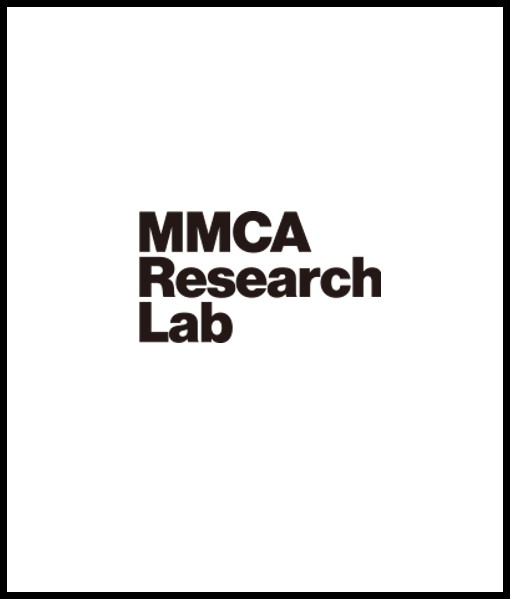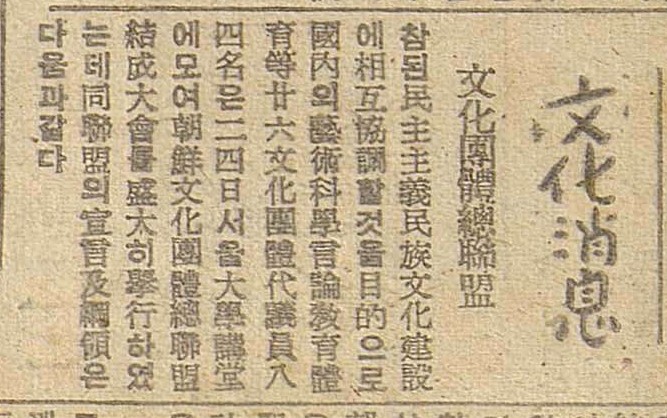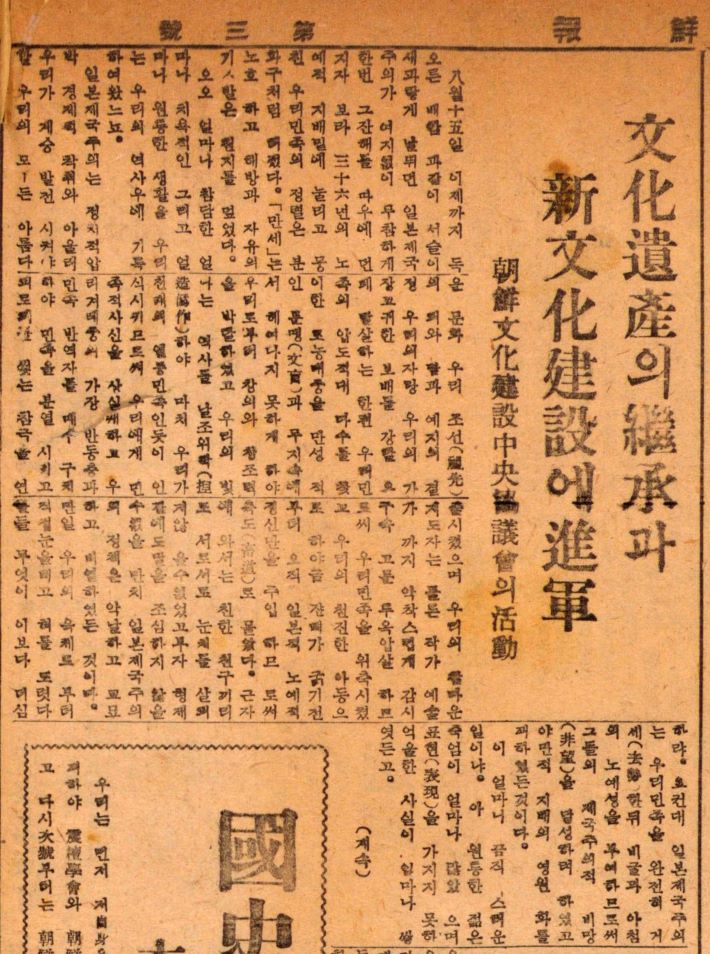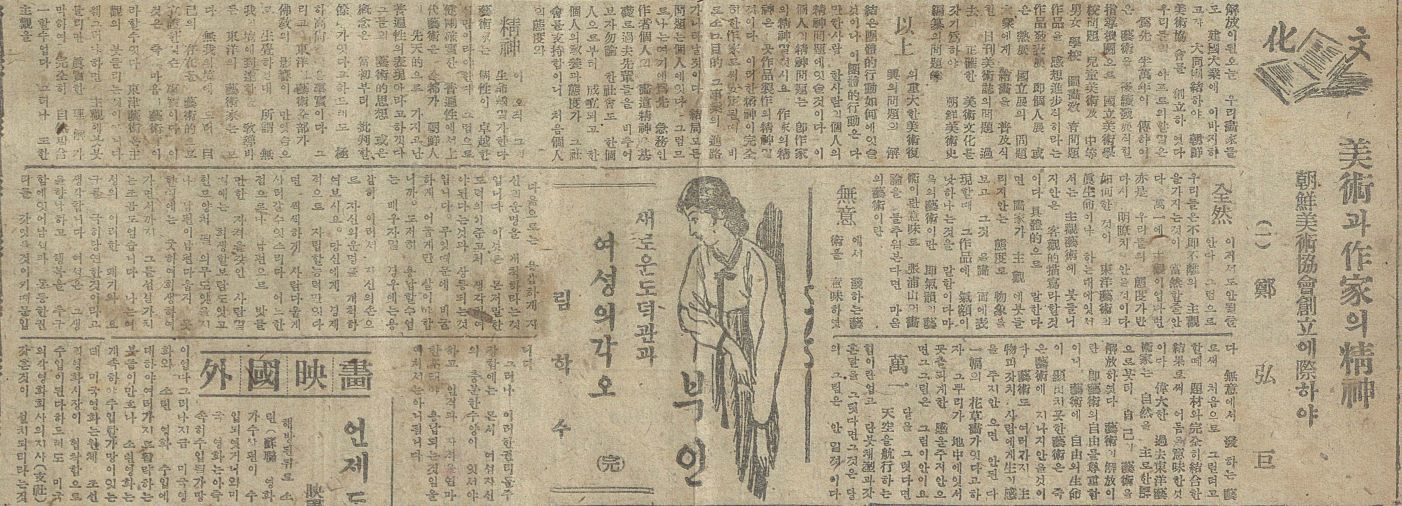
Gyeongbuk Art Exhibition
* Source: MMCA
Related
-

Korean Federation of Cultural Organizations
A cultural organization formed in 24 February 1946, also known as Munryeon. The alliance represented a total of 25 cultural organizations established after independence. Its membership comprised a total of 13 scholarly organizations, including the Joseon Haksulwon, Joseon Scientists Federation, Joseon Institute of Industry and Medicine, Joseon Institute of Legal Scholars, Joseon Linguistics Institute, and Joseon Institute of Women Scientists; a total of 9 art organizations, including the Korean Writers Federation, Joseon Theater Federation, Joseon Music Federation, Joseon Film Federation, and the Joseon Art Federation; and the Joseon Journalists Association, Joseon Educators Association, and Joseon Sports Association. The Munryeon's concerns included encouraging the rightful succession of national culture, a critical consumption of world culture, the importation and research of advanced scientific method, the development of new theories, democratic education of the masses, scientific enlightenment, and the exclusion of unscientific and undemocratic cultural tendencies. The group expressed support for the National Democratic Front. As such, right-wing members left the group and formed the Federation of Artistic & Cultural Organization.
-

Central Committee for the Construction of Korean Culture
A progressive cultural activist organization established on 18 August 1945, under the leadership of Yim Hwa, Lee Taejun, Kim Namchun, and Lee Wonjo. The concern of the Central Committee for the Construction of Korean Culture (Joseon munhwa geonseol jungang hyeopuihoe) was cultural liberation, cultural development, and national reunification after the divisive period of colonialism. The purpose of this association was to build an independent national culture. On 17 September 1945, dissatisfaction with the ambiguous class-based tendencies of the Central Committee for the Construction of Korean Culture (Joseon munhwa geonseol jungang hyeopuihoe) led Han Seol-a, Lee Giyeong, and Yun Gijeong to leave the group and organize the Korean Artist Proletarian Federation. On the 13th of December that same year, the Communist Party of Korea demanded that both the Central Committee for the Construction of Korean Culture (Joseon munhwa geonseol jungang hyeopuihoe) and the Korean Artist Proletarian Federation (Joseon peurolletaria yesul dongmaeng) merge, and the two organizations merged into the Federation of Korean Writers (Joseon munhakga dongmaeng) on 8 February 1946.
-

Korean Art Association
An organization established in 1945 under the leadership of Ko Huidong after the Headquarters for the Korean Art Construction Headquarters (Joseon misul geonseol bonbu), the largest art organization of the time, disbanded. Criticizing the political activism of the Korean Art Construction Headquarters, the Korean Artists Association avowed political neutrality Ko Huidong was the president of the association, and famous artists of the time such as Lee Chongwoo, Kim Yongjun, Kim Jukyung, No Soohyeon, and Gilbert Pha Yim all participated in the association. The association claimed to be the successor of the Society of Painters and Calligraphers, which was active from the late 1910s to the 1930s. The association planned the establishment of art schools, the publication of books on art history, the holding of exhibitions, and the publication of art magazines. Contrary to its avowed political neutrality, however, Ko Huidong, who held right-wing beliefs, continued with his pro-government activism, and numerous members who opposed this left the association to form the Korean Art Alliance (Joseon misul dongmaeng) in 1946.







